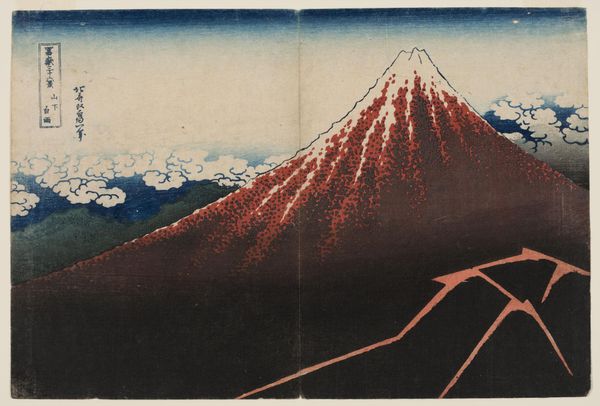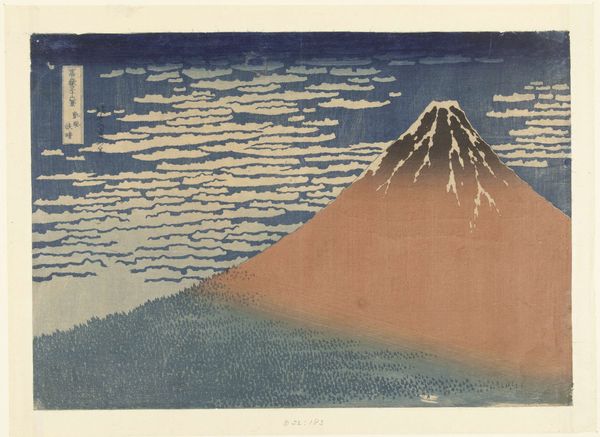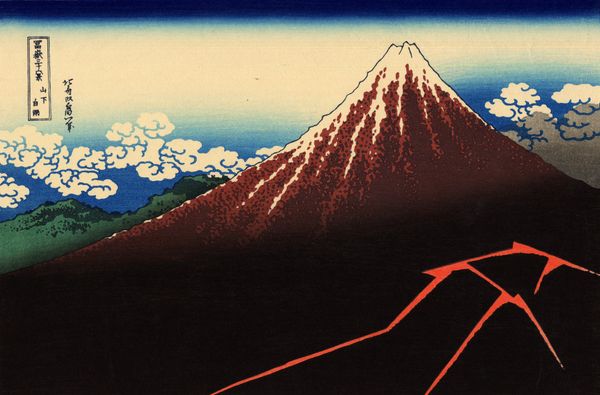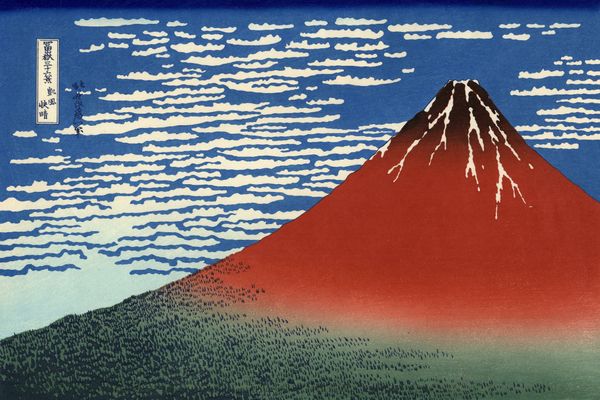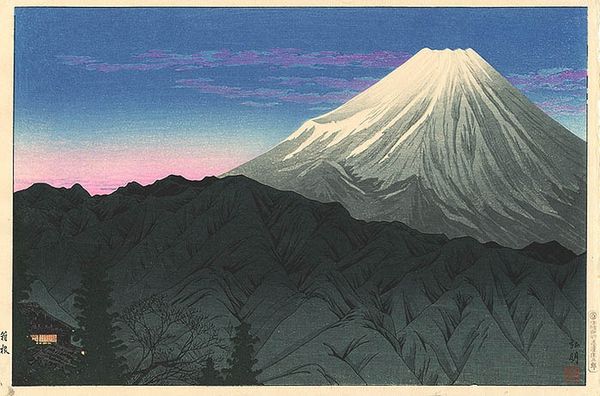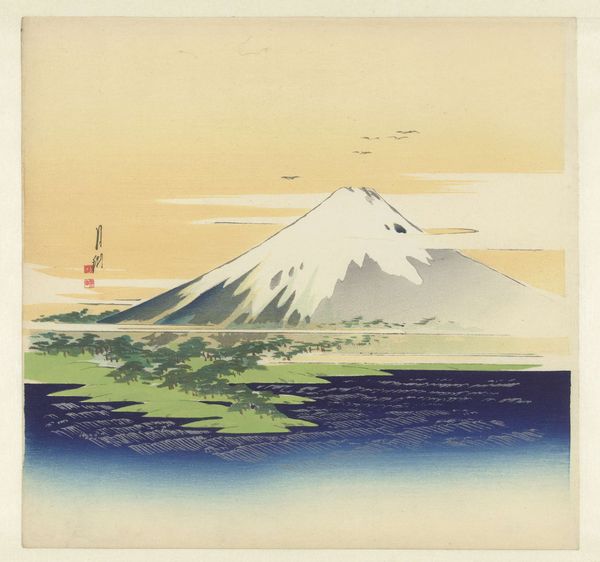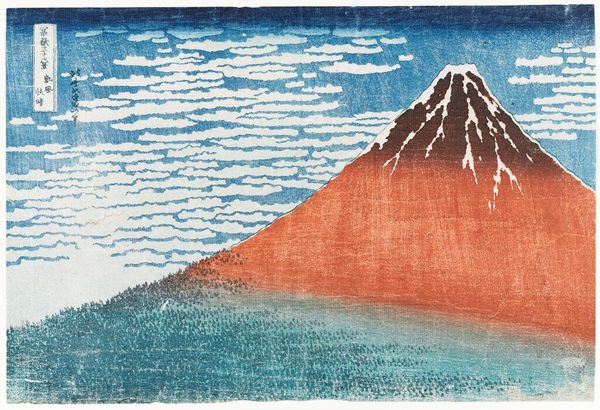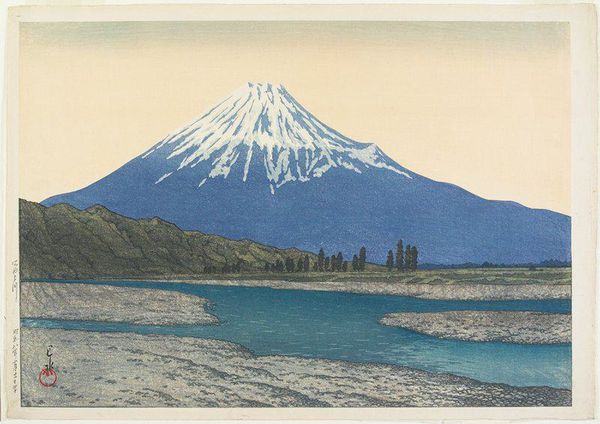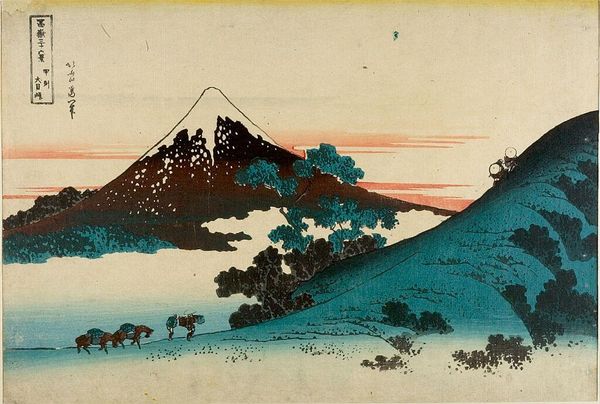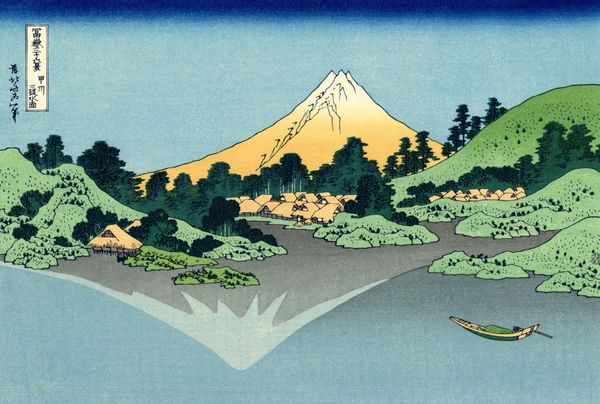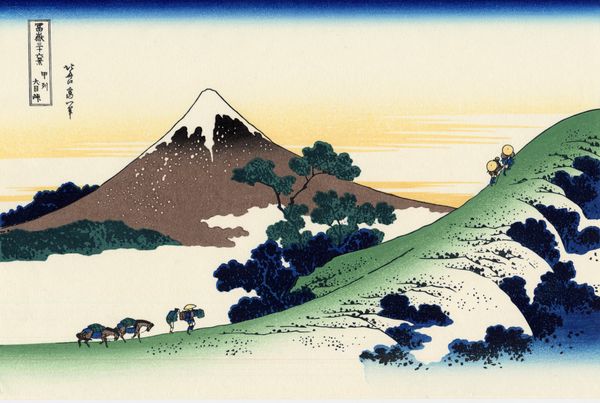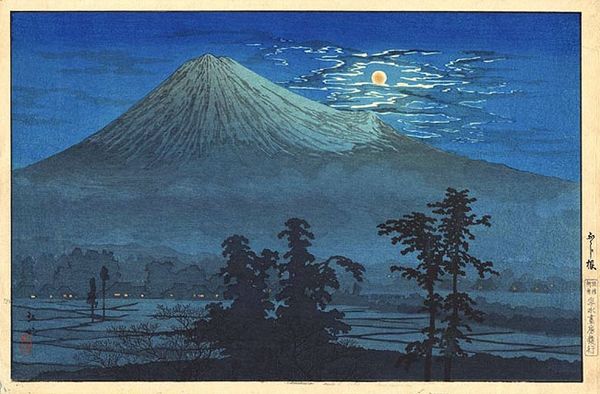
print, ink, woodblock-print
#
water colours
# print
#
asian-art
#
landscape
#
ukiyo-e
#
japan
#
ink
#
woodblock-print
#
geometric
#
mountain
Dimensions: height 254 mm, width 375 mm
Copyright: Public Domain
Katsushika Hokusai's "Rainstorm beneath the Summit," is a woodblock print that captures Mount Fuji as a striking form dominating the composition. The mountain’s stark contrast—dark base and red upper section—commands our attention. The formal arrangement is intriguing; Hokusai destabilizes traditional landscape expectations. The mountain, a symbol of stability, is shown under meteorological distress. The red striations, achieved through careful layering, suggest both geological texture and the path of rainfall. This disrupts the serene, idealized views of nature common at the time. Notice how the jagged lines of lightning cut through the lower portion of the image, challenging the eye and creating tension. These elements don't merely depict a scene but engage with broader philosophical concerns about nature's power. Hokusai masterfully uses color and line to explore how nature can be perceived not just as a visual spectacle but as an active force that shapes our understanding of the world. This print invites ongoing interpretation, acknowledging that art embodies evolving cultural and philosophical dialogues.
Comments
minneapolisinstituteofart almost 2 years ago
⋮
Hokusai took an interest in the work of Rinpa school artists, whose boldly designed compositions were often inspired by themes from classical court painting. Hokusai must have been aware of two important sets of folding screens by earlier Rinpa artists picturing the gods of wind and thunder: one by Tawaraya Sōtatsu (active ca. 1600– ca. 1640), the other by Ogata Kōrin (1658–1716). His own renditions of those gods appear in the third volume of Hokusai manga (Random Sketches of Hokusai), published in 1815. He was probably also familiar with an interpretation of Kōrin’s wind and thunder gods by Sakai Hōitsu (1761–1828), who painted windblown autumn grasses and rain-soaked summer flowers on the reverse of Kōrin’s screens. Hokusai’s Rainstorm beneath the Summit, with its dramatic bolt of lightning, obviously stands for thunder, and his Fine Wind, Clear Weather (on view nearby) could represent wind. Hokusai may have intended these two compositions as companion pieces in his Thirty-six Views of Mount Fuji series.
Join the conversation
Join millions of artists and users on Artera today and experience the ultimate creative platform.
